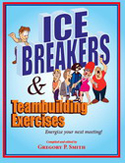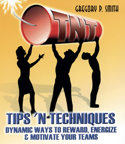BUILD CUSTOMER LOYALTY AND MAKE MORE MONEY
Most businesses spend more time and energy trying
to find new customers instead of retaining those
they have. The logic behind customer retention is
simple–It costs far less money to keep customers
happy than to spend much more money recruiting new
ones. Loyal customers tell their friends about
your business and will spend more money than new
customers.
I dread eating at airports. If you travel as much
as I do, you are probably familiar with the “3
b’s” as it applies to airport fare–bad food, bad
attitudes, bad timing.
I had an early flight to catch at the Ontario,
California airport recently. I found myself
standing outside the closed and gated doorway to
an Applebee’s restaurant ten minutes before they
opened up. I just knew they would be late and
expected to receive the usual grumpy service
common at most airports the world over. I was
wrong!
Bam! The clock struck five, the lights popped on
and this charming lady opened the doors. She
greeted me with a smile, a warm “hello” and told
me to sit anywhere I wanted. I never had seen
such a positive attitude at 5:00 in the morning.
For the next hour, I watched Felicia cheerfully
greet customers, many of which she called by name.
They were the “regulars” she said. Felicia was
the remarkable person who made that small
restaurant pleasant and memorable. Next time I
return to the Ontario Airport, I guarantee you
this is the restaurant I am going to first.
Here are seven steps to build customer loyalty.
1. Select the right people. In the book, From
Good to Great, Jim Collins said, “People are not
your most important asset, the RIGHT people are.”
Most businesses do a poor job of hiring people.
They hire just anyone and place them on the front-
line with customers. Spend more time recruiting
and hiring the right people with good
personalities. Focus on those who are friendly and
demonstrate an interest and enthusiasm for the
job. Consider using personality profiles as part
of the hiring process. These profiles help
identify true personality characteristics of your
applicants.
2. Sensationalize the experience for your
customers. Good service is not good enough. A
Gallup survey showed a customer who is
“emotionally connected” to your place of business
is likely to spend 46% more money than a customer
who is merely “satisfied” but not emotionally
bonded.
3. Set performance standards. Outline the
behaviors of how employees should act, speak, and
respond to customer needs and requests. One of our
clients developed a list of twenty customer
service commandments that outline actions he
wanted his service people to demonstrate.
4. Sustain on-going training and
reinforcement. Good customer service skills are
not natural for most people. Effective customer
service training must be reinforced and taught on
a recurring basis. For example, the Ritz-Carlton
hotels provide a thorough customer service
training program for all of its employees during
their orientation. Then each supervisor conducts a
daily “line-up” to review one of the commandments
with his employees ten minutes before each shift.
5. Specify incentives for good behavior. Yes,
employees want to be paid well, but they also want
to be treated with respect and shown appreciation.
The front-line supervisor has the greatest impact
on motivating and retaining employees. Reward
those who exceed the standards and provide
development for those who do not.
6. Survey your customers and reduce your
defection rate. On average, businesses lose 15-20
percent of their customers each year to their
competition. All businesses encounter this
defection rate, but few do much about it. To
improve retention, one client sends out a customer
service report card to its top customers every
month. This requires an evaluation based on four
specific criteria. They tally the results and make
sure employees see the scores. This motivates the
employees to do a better job.
7. Seek customer complaints with enthusiasm.
For every complaint there are at least 10 other
customers that visited your business who have the
same criticism. A portion of those 10 people just
took their business to your competitor. Look at
customer complaints as an opportunity for
improvement.
We can help you custom design a unique customer
service strategy or provide you with over 12 off-
the-shelf customer service training programs.
There are specific programs for retail, service,
professional, and healthcare organizations. You
can purchase the material to teach the class
yourself, take it online, or we can send someone
to teach it for you. For more information visit
http://www.chartcourse.com/captainscustomerservice.html
















